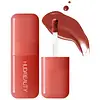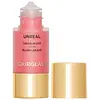What's inside
What's inside
 Key Ingredients
Key Ingredients

 Benefits
Benefits

 Concerns
Concerns

 Ingredients Side-by-side
Ingredients Side-by-side

Hydrogenated Polyisobutene
EmollientHydrogenated Poly(C6-14 Olefin)
EmollientMica
Cosmetic ColorantDiisostearyl Malate
EmollientOctyldodecanol
EmollientCalcium Titanium Borosilicate
AbrasiveTrimethylsiloxysilicate
EmollientIsododecane
EmollientHydrogenated Styrene/Isoprene Copolymer
Silica
AbrasiveSynthetic Fluorphlogopite
Disteardimonium Hectorite
StabilisingDextrin Palmitate
EmulsifyingSorbitan Sesquioleate
EmulsifyingPhenoxyethanol
PreservativePropylene Carbonate
SolventParfum
MaskingTin Oxide
AbrasiveTriethoxycaprylylsilane
Aluminum Hydroxide
EmollientPolyhydroxystearic Acid
EmulsifyingPentaerythrityl Tetra-Di-T-Butyl Hydroxyhydrocinnamate
AntioxidantTocopherol
AntioxidantTitanium Dioxide
Cosmetic ColorantCI 15985
Cosmetic ColorantIron Oxides
CI 15850
Cosmetic ColorantHydrogenated Polyisobutene, Hydrogenated Poly(C6-14 Olefin), Mica, Diisostearyl Malate, Octyldodecanol, Calcium Titanium Borosilicate, Trimethylsiloxysilicate, Isododecane, Hydrogenated Styrene/Isoprene Copolymer, Silica, Synthetic Fluorphlogopite, Disteardimonium Hectorite, Dextrin Palmitate, Sorbitan Sesquioleate, Phenoxyethanol, Propylene Carbonate, Parfum, Tin Oxide, Triethoxycaprylylsilane, Aluminum Hydroxide, Polyhydroxystearic Acid, Pentaerythrityl Tetra-Di-T-Butyl Hydroxyhydrocinnamate, Tocopherol, Titanium Dioxide, CI 15985, Iron Oxides, CI 15850
Isoamyl Laurate
EmollientHydrogenated Polydecene
EmollientSynthetic Fluorphlogopite
Diisostearyl Malate
EmollientIsododecane
EmollientOctyldodecanol
EmollientTrimethylsiloxysilicate
EmollientStearalkonium Hectorite
Gel FormingPropylene Carbonate
SolventSorbitan Sesquioleate
EmulsifyingVp/Hexadecene Copolymer
Helianthus Annuus Seed Oil
EmollientDimethicone
EmollientCaprylyl Glycol
EmollientBenzotriazolyl Dodecyl P-Cresol
UV AbsorberEthylhexylglycerin
Skin ConditioningRicinus Communis Seed Oil
Masking1,2-Hexanediol
Skin ConditioningLupinus Albus Seed Extract
Skin ConditioningSorbitan Olivate
EmulsifyingTocopherol
AntioxidantSodium Hyaluronate
HumectantCaproic Acid
CleansingCI 15985
Cosmetic ColorantCI 19140
Cosmetic ColorantCI 45410
Cosmetic ColorantIron Oxides
CI 77891
Cosmetic ColorantIsoamyl Laurate, Hydrogenated Polydecene, Synthetic Fluorphlogopite, Diisostearyl Malate, Isododecane, Octyldodecanol, Trimethylsiloxysilicate, Stearalkonium Hectorite, Propylene Carbonate, Sorbitan Sesquioleate, Vp/Hexadecene Copolymer, Helianthus Annuus Seed Oil, Dimethicone, Caprylyl Glycol, Benzotriazolyl Dodecyl P-Cresol, Ethylhexylglycerin, Ricinus Communis Seed Oil, 1,2-Hexanediol, Lupinus Albus Seed Extract, Sorbitan Olivate, Tocopherol, Sodium Hyaluronate, Caproic Acid, CI 15985, CI 19140, CI 45410, Iron Oxides, CI 77891
 Reviews
Reviews

Ingredients Explained
These ingredients are found in both products.
Ingredients higher up in an ingredient list are typically present in a larger amount.
Ci 15985 is a dye made from petroleum. It is synthetically created and approved by the FDA for use in foods and cosmetics.
The color of this dye is orange/yellow.
This ingredient can be found in makeup, sun care, and skincare.
Learn more about CI 15985Diisostearyl Malate is an emollient and most often used in lip products. It comes from isostearyl alcohol, a fatty acid, and malic acid, an AHA.
As an emollient, Diisostearyl Malate helps create a thin film on your skin to trap moisture in. This helps keep your skin soft and smooth.
Isododecane is a fragrance, emollient, and solvent.
As an emollient, it helps your skin stay soft and hydrated. Emollients help trap moisture into your skin.
Isododecane's role as a solvent makes it a great texture enhancer. It spreads smoothly on skin and does not leave a sticky feeling behind. Isododecane also helps prevent color transfer in makeup products.
Isododecane is not absorbed into skin.
Learn more about IsododecaneOctyldodecanol is a fatty alcohol. It is primarily used to enhance the texture of products.
As an emulsifier, Octyldodecanol helps prevent the oils and waters from separating. It also prevents ingredients from creating foam when shaken.
Octyldodecanol is created by reducing fatty acid to an alcohol.
Due to its high molecular weight, it does not get absorbed into the skin.
Learn more about OctyldodecanolThis ingredient is a solvent. It helps dissolve active ingredients and alter the texture of products.
Propylene Carbonate is commonly used in makeup and with clay, such as montmorillonite or bentonite.
Studies show this ingredient to be safe for cosmetics. When it is undiluted, it can cause skin irritation. (It is always diluted in skincare and makeup). This ingredient is water-soluble.
Propylene Carbonate is created from propylene glycol and carbonic acid.
Learn more about Propylene CarbonateSorbitan Sesquioleate is derived from sorbitol and oleic acid. It is an emulsifier and prevents ingredients from separating.
Specifically, this ingredient is a water-in-oil emulsifier, meaning it helps water dissolve into oil.
Some studies suggest this ingredient may cause irritation in some people. If you are unsure, it is best to patch test.
This ingredient may not be Malassezia folliculitis, or fungal-acne safe.
Learn more about Sorbitan SesquioleateSynthetic Fluorphlogopite is the synthethic version of mica. It consists of fluorine, aluminum and silicate.
Synthetic Fluorphlogopite is used to add volume to products.
It is considered non-irritating on the skin.
Learn more about Synthetic FluorphlogopiteTocopherol (also known as Vitamin E) is a common antioxidant used to help protect the skin from free-radicals and strengthen the skin barrier. It's also fat soluble - this means our skin is great at absorbing it.
Vitamin E also helps keep your natural skin lipids healthy. Your lipid skin barrier naturally consists of lipids, ceramides, and fatty acids. Vitamin E offers extra protection for your skin’s lipid barrier, keeping your skin healthy and nourished.
Another benefit is a bit of UV protection. Vitamin E helps reduce the damage caused by UVB rays. (It should not replace your sunscreen). Combining it with Vitamin C can decrease sunburned cells and hyperpigmentation after UV exposure.
You might have noticed Vitamin E + C often paired together. This is because it is great at stabilizing Vitamin C. Using the two together helps increase the effectiveness of both ingredients.
There are often claims that Vitamin E can reduce/prevent scarring, but these claims haven't been confirmed by scientific research.
Learn more about TocopherolThis silicone is an emollient. Emollients create a thin film on the skin to prevent moisture from escaping.
It is not soluble in water and helps increase water-resistance in products.
According to a manufacturer, it can blend seamlessly with silicone oils, such as Cyclopentasiloxane.
Learn more about TrimethylsiloxysilicateThis ingredient is a combination of red, black, and yellow iron oxide pigments. This combination of colors is usually found in foundation, because it results in a "skin" color.